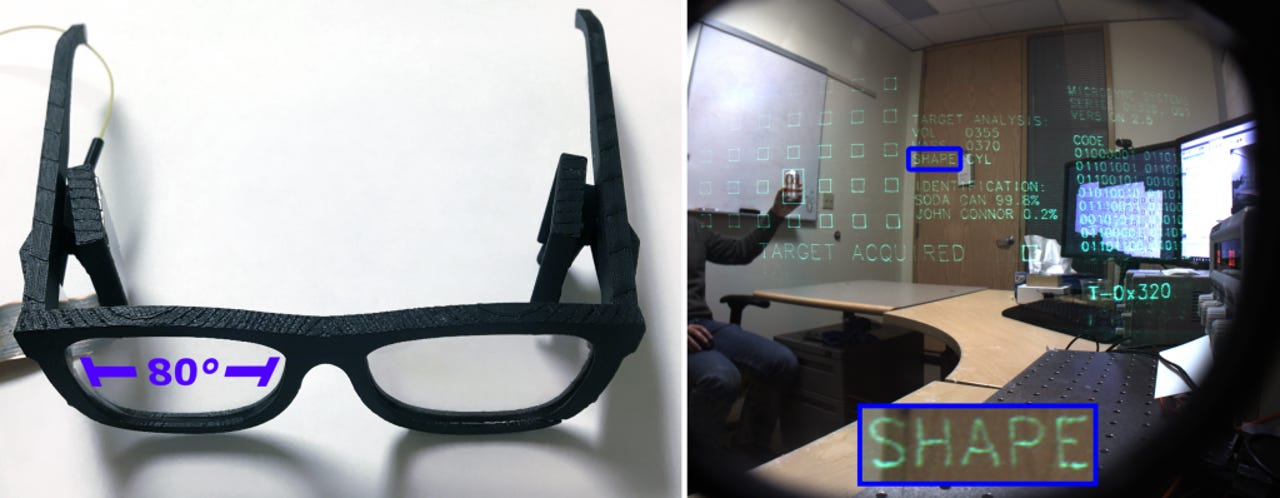Microsoft's smartphone killer? Possible future HoloLens takes sunglasses form


Microsoft's prototype holographic sunglasses create a display with an 80-degree horizontal view, a width that usually requires headsets or helmet-sized displays.
Microsoft has showed off new techniques it's using to bring holographic projection to a less cumbersome and socially awkward form factor than today's VR headsets.
Microsoft Research has developed a prototype of a pair of normal-looking glasses that can project holograms onto the lens.
The "crude prototype" creates a display with an 80-degree horizontal view, a width that usually requires headsets or helmet-sized displays.
Although the holographic eyewear is a very early prototype for showing holograms in a smaller form factor, Microsoft Research did achieve its goal of demonstrating that defective holographic optics can be corrected.
However, significant hurdles remain to creating a product, including figuring how to create a stereo display. The current prototype is monoscopic.
Still, as Microsoft boasts, it did manage to create high-contrast, high-resolution, and full-color digital holograms in a near-eye display.
Microsoft is also exploring how to reproduce focal depth cues that people use when focusing on different parts of an object. As Microsoft notes, most near-eye systems display everything in the same focus, whereas its prototype is able to display a holographic dragon with each pixel in the correct focus.
A third area it's working on is for users who already need prescription eyeglasses for near- or far-sightedness. Instead of mechanically adjusting the gap between display and lens, which it says doesn't scale so well, Microsoft is exploring a software-based vision correction applied within hologram itself.
"We demonstrate that holographic displays can correct for advanced vision problems entirely in software by pre-distorting the emitted light waves so that they appear correct when viewed by the eye," Microsoft's researchers write.
Microsoft Research presented the prototype and a paper on the techniques at an augmented- and mixed-reality conference last week.
Although Microsoft notes that the hologram project is "not necessarily indicative of any Microsoft product roadmap", it comes as the company hunts for a smartphone-killer.
Microsoft CEO Satya Nadella recently said the company will make more phones after walking away from its Nokia handsets, only the next device won't look like a phone.
Some inside Microsoft, such as HoloLens creator Alex Kipman, believe Microsoft's headgear, or something like it, will ultimately replace all screens.